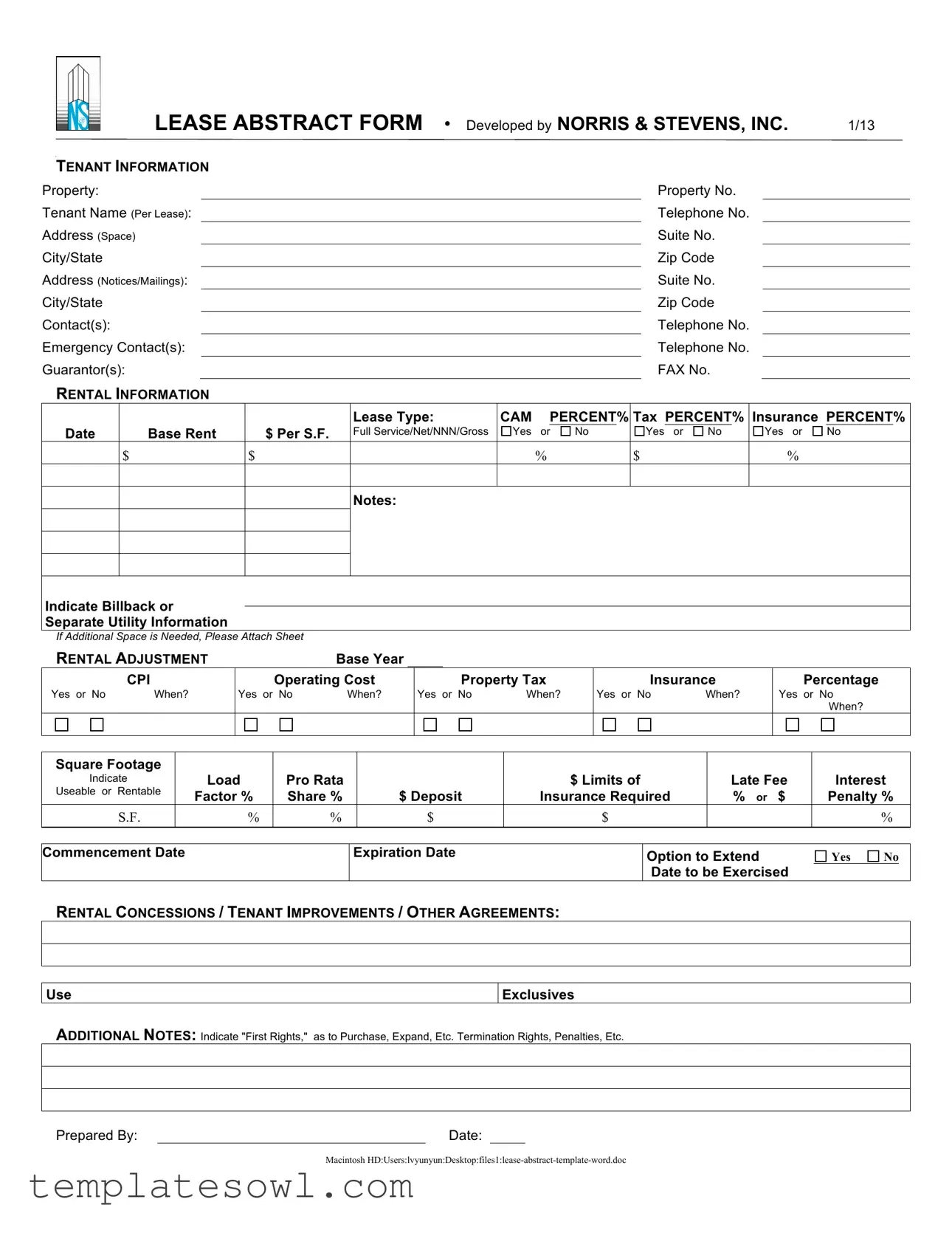What is a Lease Abstract Form?
A Lease Abstract Form is a summary document that highlights the key details of a lease agreement. It condenses important information such as tenant and property details, financial terms, and lease conditions, making it easier to understand the lease without having to read through the entire document.
Why is a Lease Abstract important?
This form is vital for landlords, property managers, and tenants alike. It simplifies the management of lease agreements by allowing quick access to essential information. It is especially useful for tracking multiple leases, ensuring compliance, and planning for financial obligations over the duration of the lease.
What information is included in a Lease Abstract?
The Lease Abstract contains various sections detailing tenant information, rental information, rental adjustments, concessions, and any special agreements. Key elements include the tenant's contact details, property specifications, base rent, lease type, square footage, and any applicable fees or percentages, such as taxes and insurance.
Who prepares the Lease Abstract Form?
Typically, the Lease Abstract is prepared by property management personnel or leasing agents. The goal is to ensure all pertinent lease details are accurately captured for easy reference. However, tenants may also request a copy for their records or for better understanding of their obligations.
Can I get a copy of the Lease Abstract Form?
Yes, you can request a copy of the Lease Abstract Form from your landlord or property management company. It’s important to have this document for your records, as it provides a summary of your lease’s key terms and conditions.
How often should the Lease Abstract be updated?
The Lease Abstract should be updated whenever there are significant changes to the lease agreement, such as new rental terms or adjustments. Keeping this document current is essential for maintaining an accurate understanding of your agreement.
What are Rental Concessions and Tenant Improvements?
Rental concessions are benefits offered by landlords to entice tenants, such as reduced rent or a period of free rent. Tenant improvements refer to any modifications made to a leased space that suit the tenant's needs. Both of these should be specified in the Lease Abstract to provide clarity on what was agreed upon.
Is the Lease Abstract legally binding?
No, the Lease Abstract itself is not legally binding. It serves as a summary and reference tool. The actual lease agreement is the legally binding document. However, ensuring the accuracy of the Lease Abstract is crucial for both parties to avoid misunderstandings later.


 Notes:
Notes: Indicate Billback or
Indicate Billback or